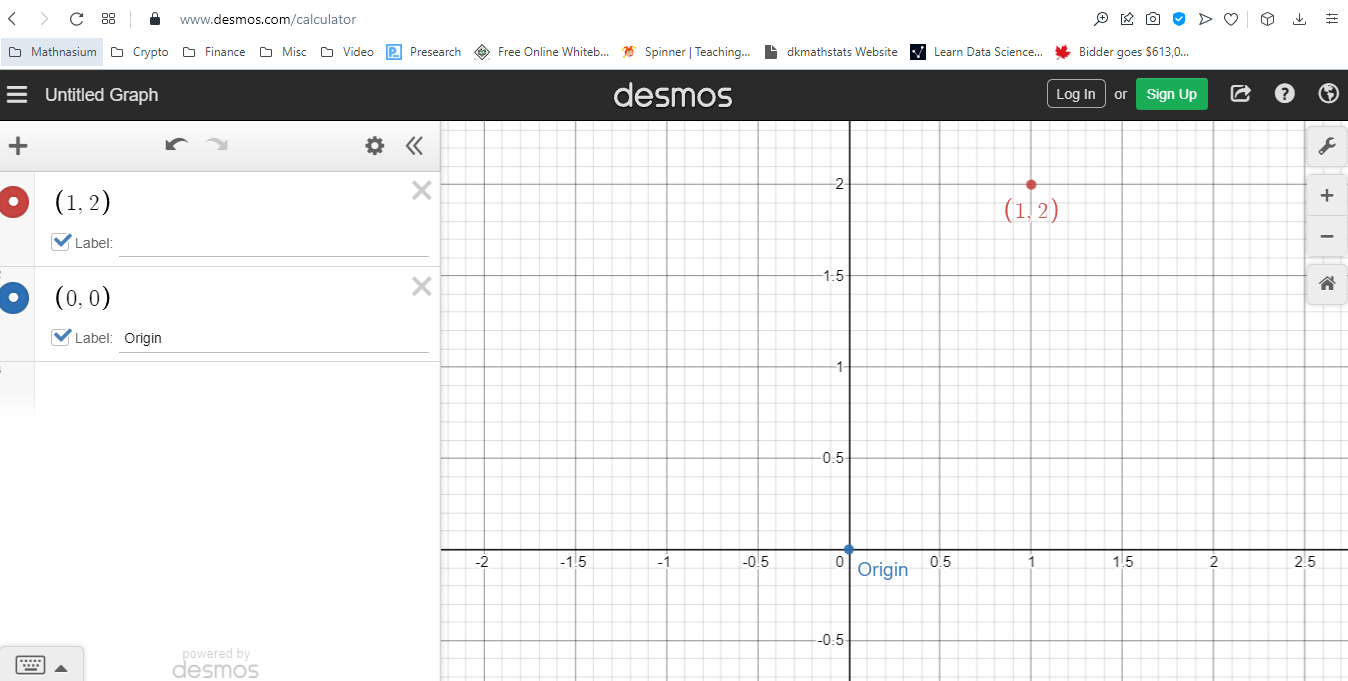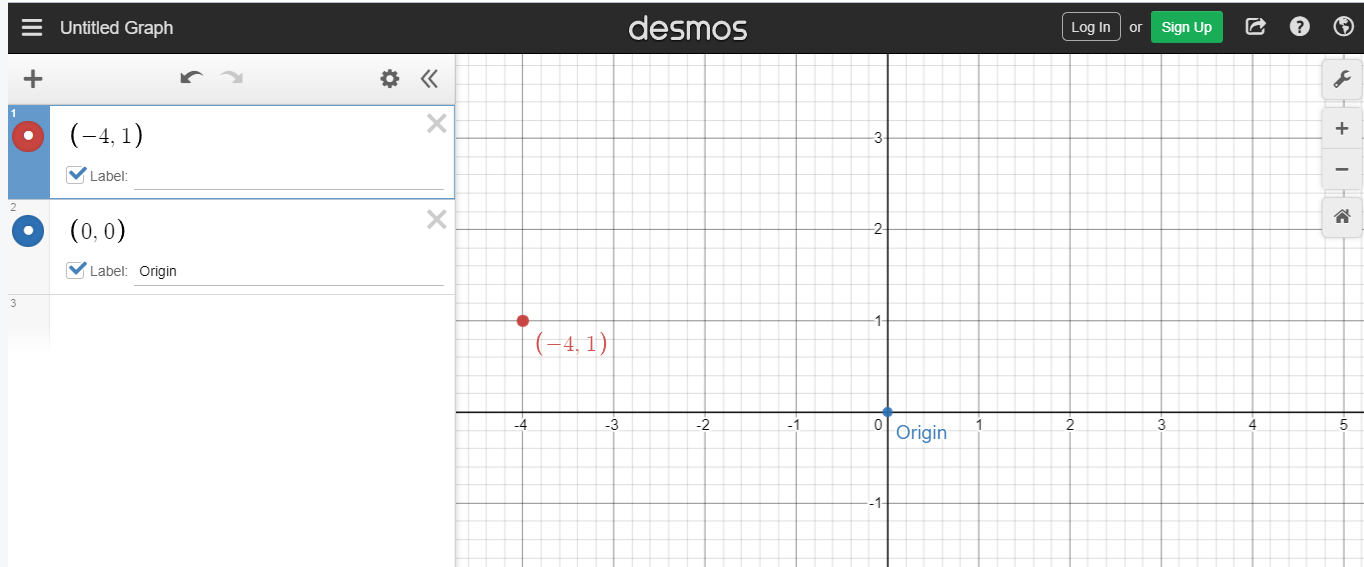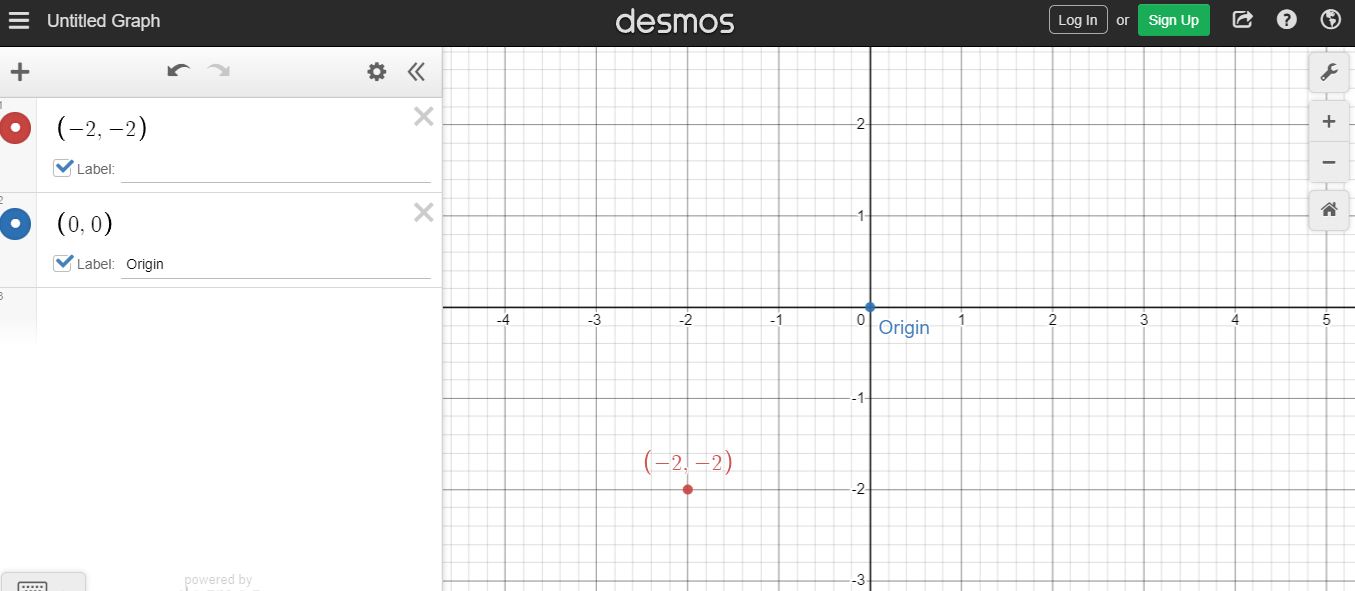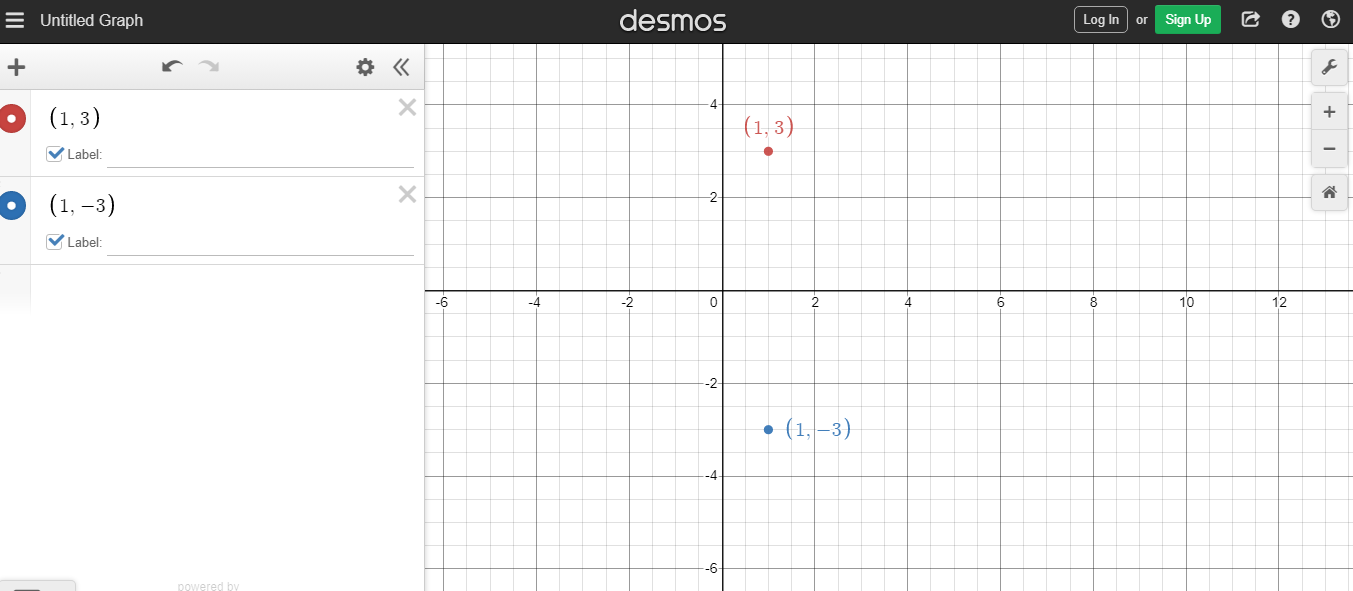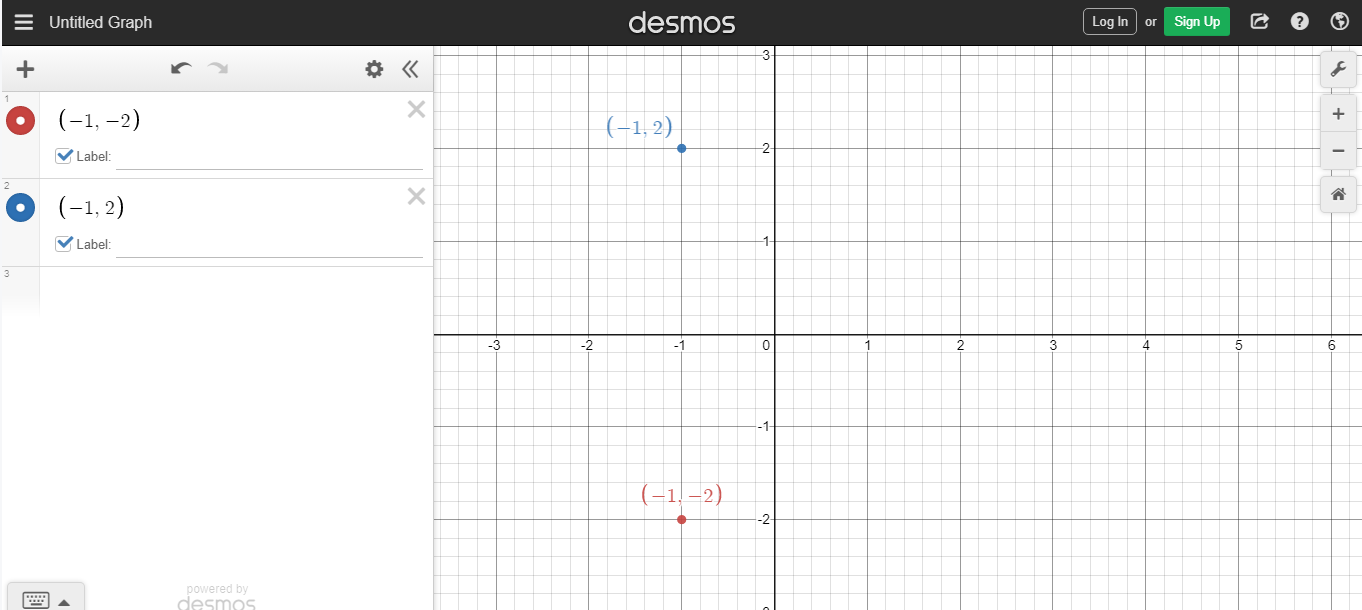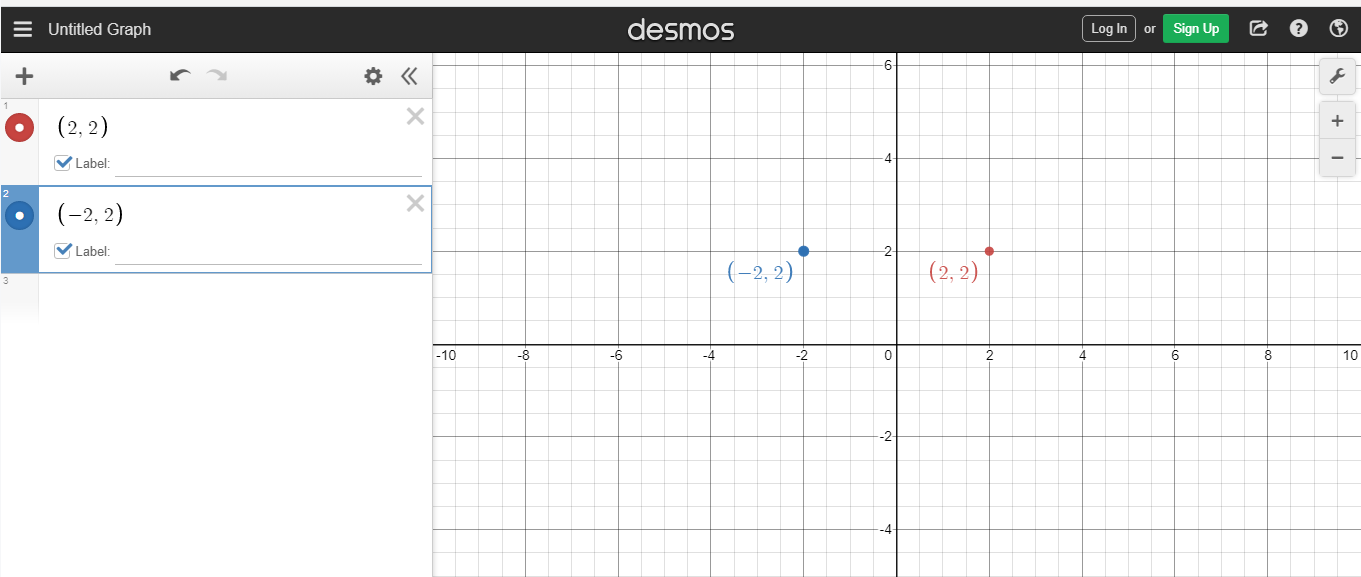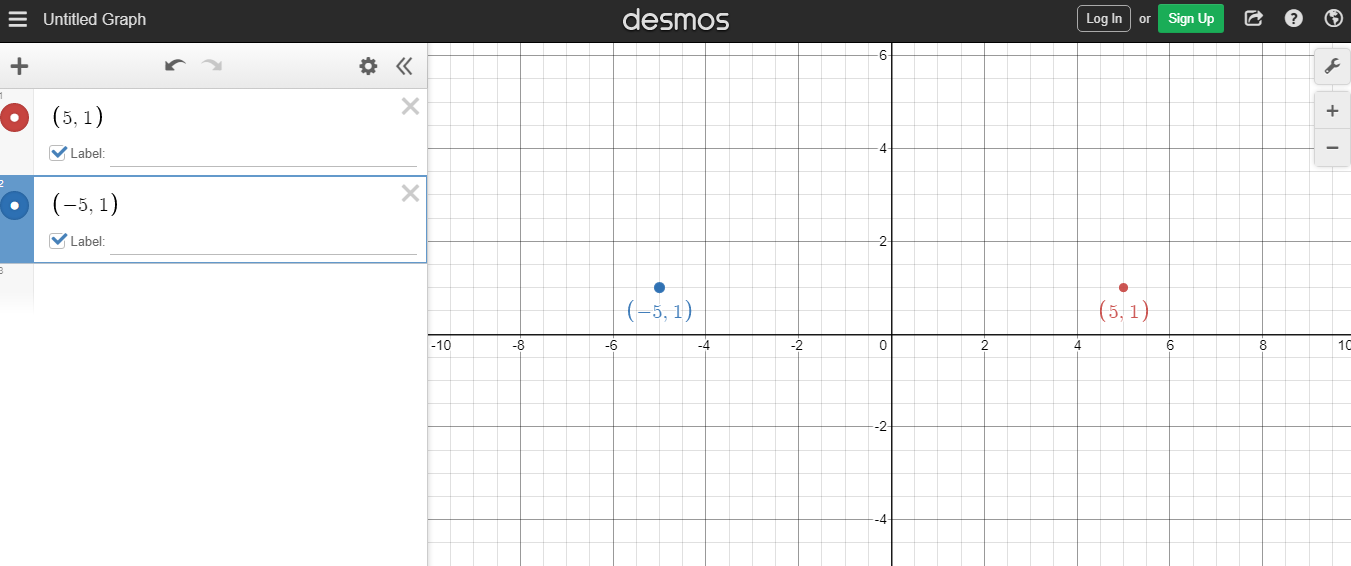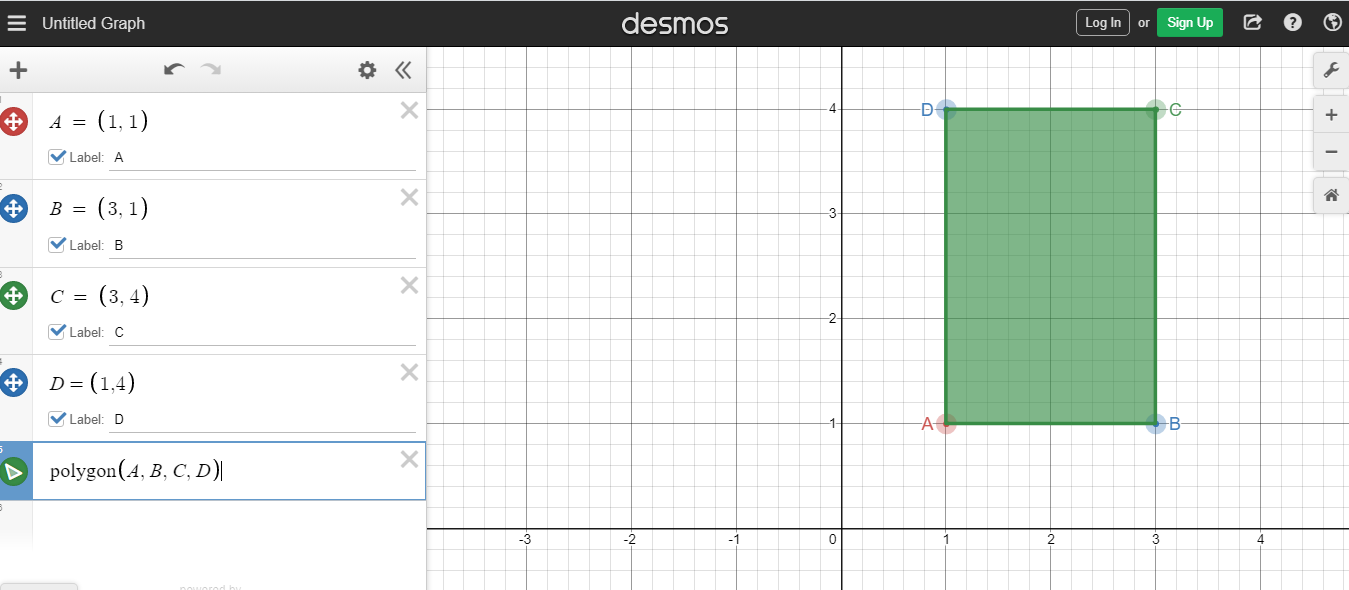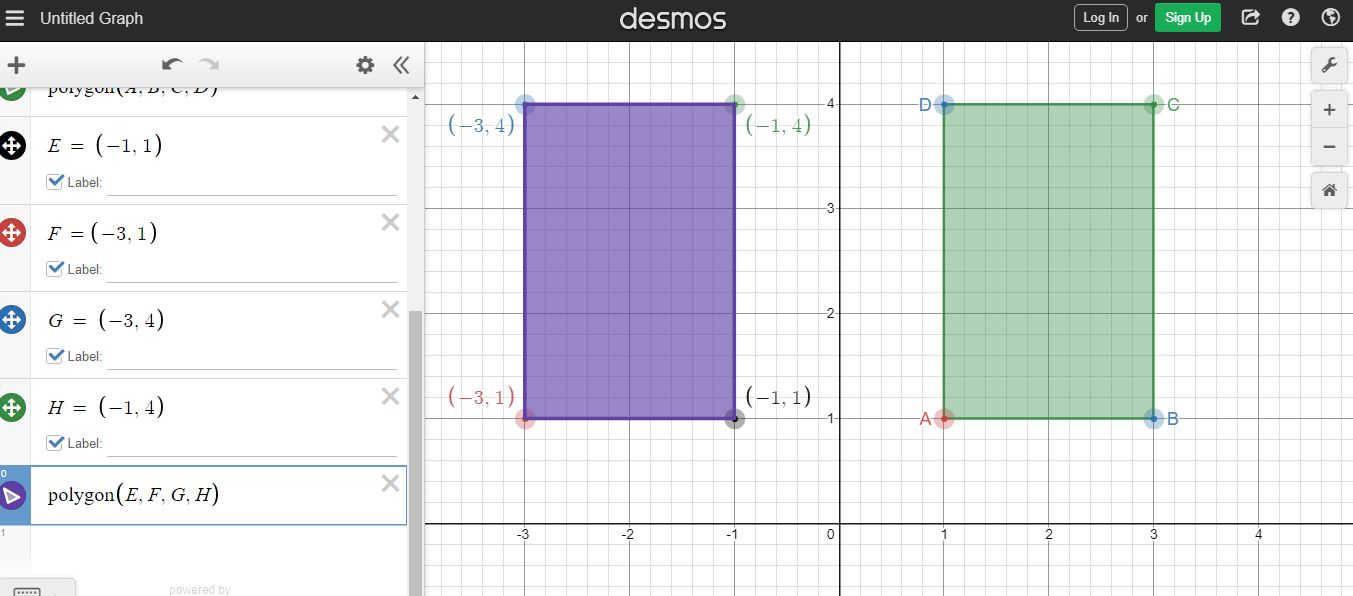Coordinates & Reflections
Hi there. In this math post, I cover the topic of coordinates and reflections.
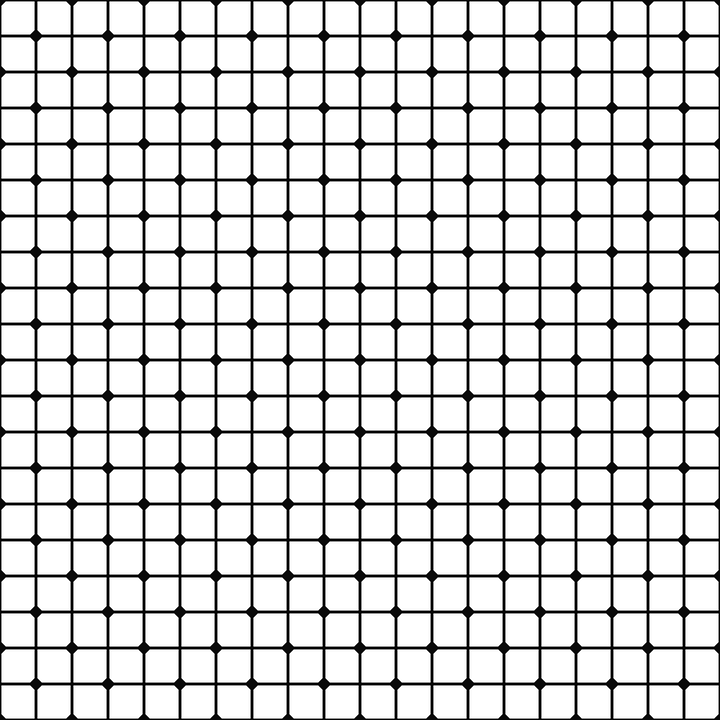
Topics
- Plotting Coordinates Review
- Reflect Over x-Axis
- Reflect Over y-Axis
- Extension - Reflecting Shapes
Plotting Coordinates Review
Before getting into reflecting coordinates, it is important to review plotting co-ordinates. A point in a two dimensional Cartesian plane points is represented by (x, y). From (x, y), x represents the amount of spaces left or right from the origin (0, 0) and y represents the amount of spaces up or down from the origin (0, 0).
Screenshots are from Desmos.
Example One
Plot (1, 2) on the coordinate grid.
Start with the origin (0, 0). The one means move one unit to the right. Two means move two units up after moving one to the right.
Example Two
Plot (-4, 1) on the coordinate grid.
Negative four for x means move left 4 units. Then move one unit up to plot the point (-4, 1).
Example Three
Plot (-2, -2) on the coordinate grid.
This one involves moving two units left and two units down from the origin.
Games On Plotting Coordinates
For more practice, these games on plotting coordinates are good.
Reflect Over x-Axis
When it comes to reflections, it can be reflected (or flipped) horizontally or vertically. Reflecting points over the x-axis involves reflecting the points vertically.
In general a point (x, y) reflected about the x-axis turns into (x, -y). The x-axis is in the middle. This makes more sense with examples.
Example One
Flipping (1, 3) over the x-axis is a vertical reflection. The point (1, 3) turns into (1, -3).
Example Two
Flipping (-1, -2) over the x-axis turns (-1, -2) into (-1, +2). It goes from bottom left to top left.
Example Three
Start with the point (0, 5). Flipping this point over the x-axis turns (0, 5) into (0, -5).
Reflect Over y-Axis
Reflecting points over the y-axis is a horizontal flip. The x-part of the coordinates is changed in sign. A point (x, y) reflected over the y-axis turns into (-x, y)
Example One
Flipping (2, 2) over the y-axis turns the point (2, 2) turns into (-2, 2). The reflection is horizontal.
Example Two
Flipping (-1, -3) over the y-axis turns (-1, -3) into (1, -3). It goes from bottom left to bottom right.
Example Three
Start with the point (5, 1). Flipping this point over the y-axis turns (5, 1) into (-5, 1).
Extension - Reflecting Shapes, An Example
On the Cartesian coordinate system shapes can be formed with multiple points. Consider a rectangle with the coordinates of (1, 1), (3, 1), (1, 4) and (3, 4). Desmos screenshot does have the points joined together. Polygons can be formed in Desmos with points and the polygon() function.
Reflecting the rectangle over the y-axis involved reflecting all four points from the rectangle over the y-axis.
(1, 1)reflected over the y-axis becomes(-1, 1)(3, 1)reflected is(-3, 1)(1, 4)is the horizontal reflection(-1, 4)(3, 4)is opposite to(-3, 4)
Posted with STEMGeeks
